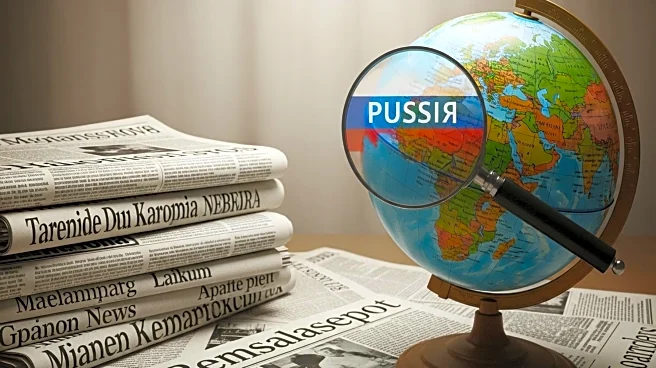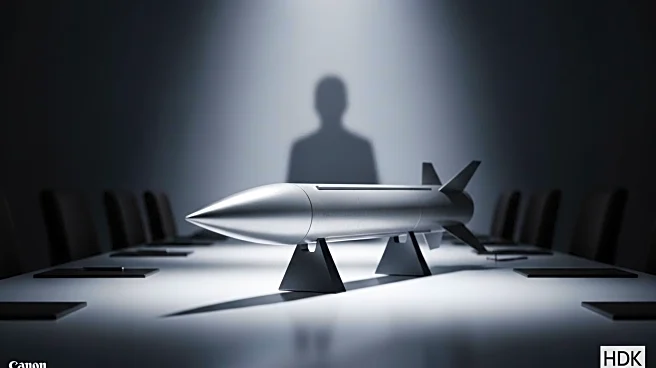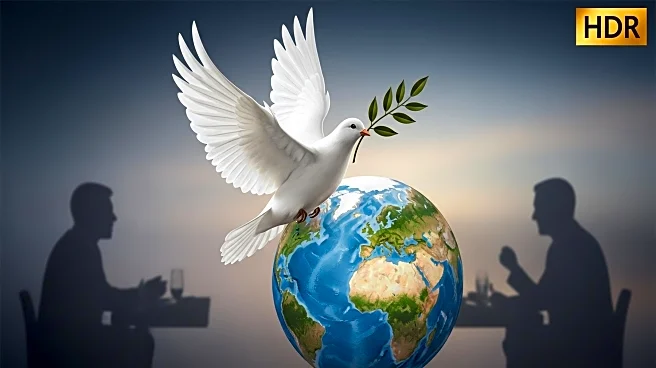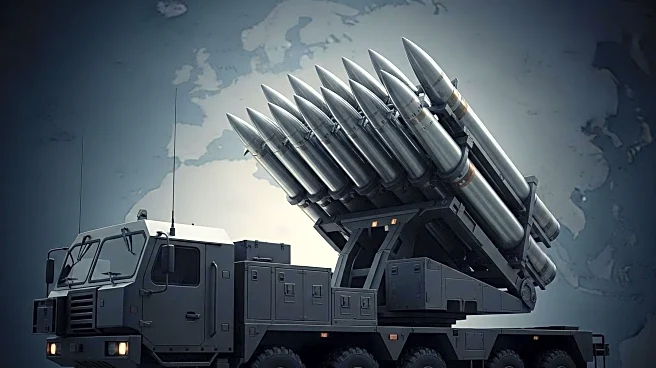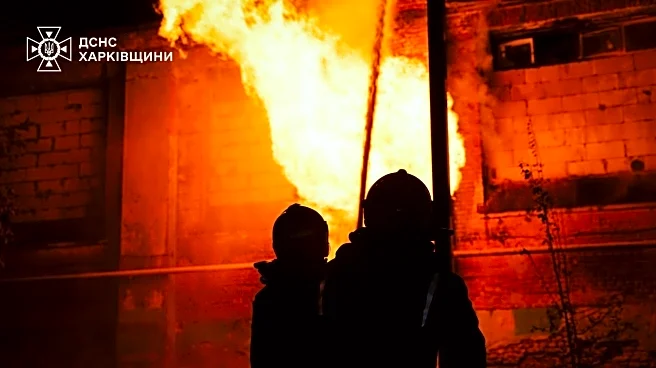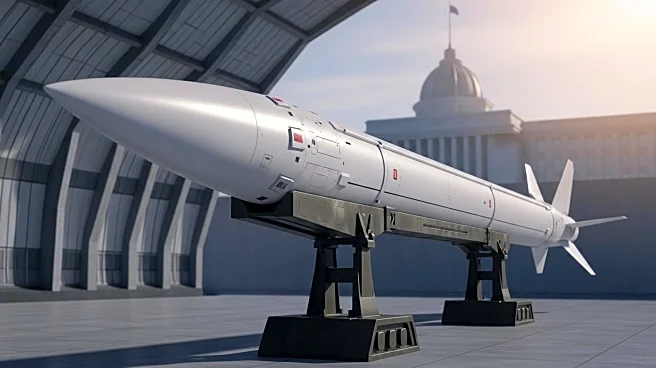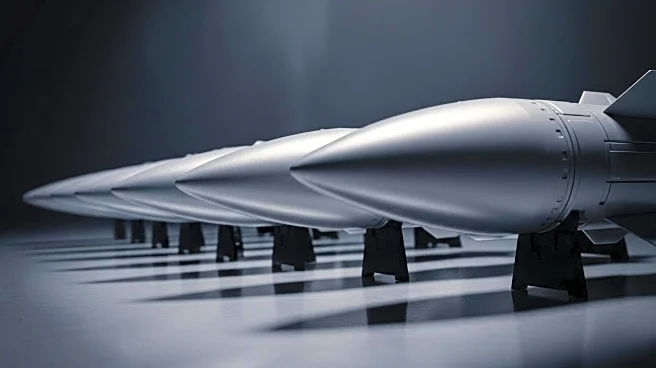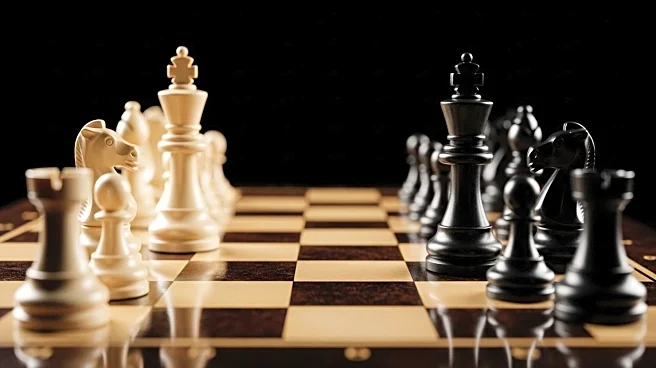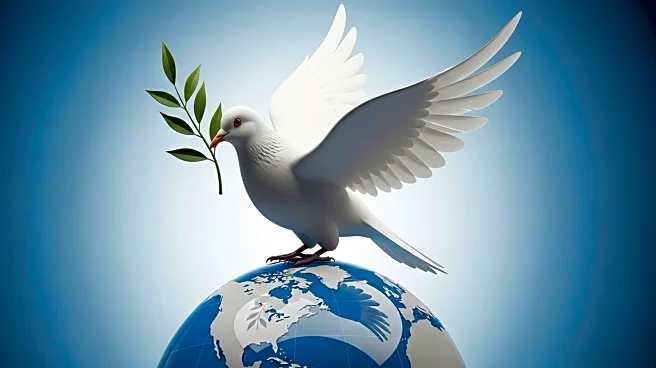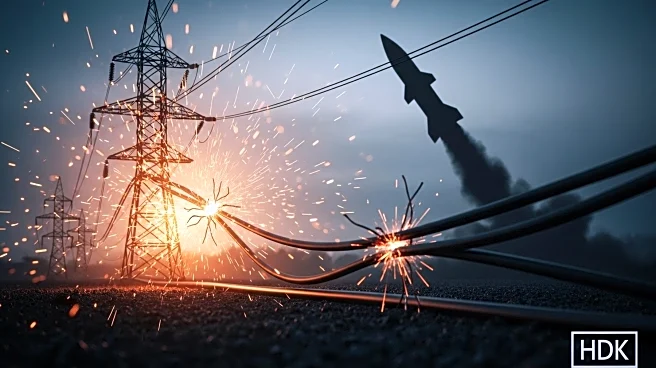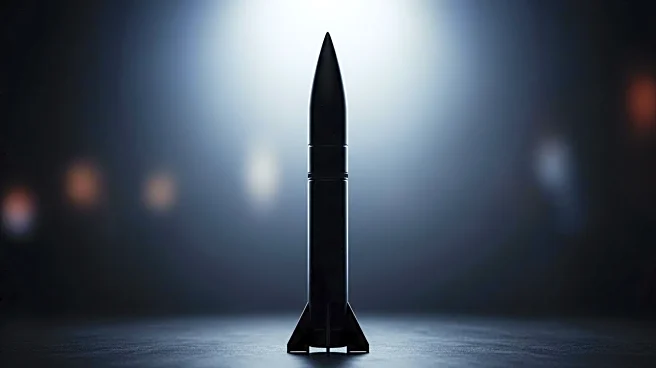What's Happening?
The Russian Foreign Ministry has expressed strong disapproval of Time magazine's cover featuring U.S. President Trump. The cover, which President Trump himself criticized, has been described by Russian Foreign Ministry spokesperson Maria Zakharova as 'astonishing.' Zakharova further commented on Telegram, stating that only 'unhealthy people' obsessed with malice and hatred could have chosen such a photo. This reaction comes amidst efforts by Moscow to improve relations with President Trump, who has invited Russian President Vladimir Putin to peace talks in Alaska. Despite these diplomatic overtures, the ongoing conflict in Ukraine continues to strain relations between the U.S. and Russia.
Why It's Important?
The criticism from the Russian Foreign Ministry highlights the delicate nature of U.S.-Russia relations, particularly under President Trump's administration. The choice of imagery by Time magazine has sparked controversy, reflecting broader tensions in international diplomacy. The incident underscores the challenges faced by media outlets in navigating political sensitivities, especially when dealing with high-profile figures like President Trump. Additionally, the situation illustrates the complexities of U.S.-Russia interactions, where diplomatic efforts are often overshadowed by ongoing geopolitical conflicts, such as the war in Ukraine.
What's Next?
The ongoing diplomatic efforts between the U.S. and Russia may continue to face hurdles, particularly with the unresolved conflict in Ukraine. President Trump's invitation to President Putin for peace talks in Alaska suggests potential avenues for dialogue, but the criticism from the Russian Foreign Ministry indicates that media portrayals can influence diplomatic relations. Stakeholders, including political leaders and media organizations, may need to navigate these tensions carefully to avoid exacerbating international conflicts.
Beyond the Headlines
The incident raises questions about the role of media in shaping public perception and international relations. The choice of imagery by Time magazine, and the subsequent backlash, highlights the power of visual media in influencing diplomatic narratives. This situation may prompt discussions on media ethics and the responsibilities of news organizations in portraying political figures, especially in a polarized global environment.
